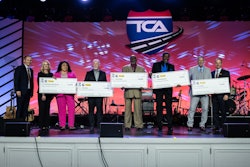Sometimes my doctor says I have high blood pressure and other times he says it’s hypertension. Which is it?
High blood pressure and hypertension mean the same thing and are the same condition. High blood pressure means high pressure in the arteries, vessels that carry your blood from your heart to all your tissues and organs. Normal blood pressure is below: 120/80, pre-hypertension: is pressure between 120/80 and 139/89 and high blood pressure is 140/90 and above.
What do the top number and bottom number mean on the blood pressure reading?
The top number is for the systolic blood pressure and corresponds to the pressure in the arteries as the heart contracts and pumps blood forward into the arteries. The bottom number is the diastolic pressure, which reflects the lowest pressure to which the arteries are exposed.
My doctor says my chest pain is called angina. What does that mean?
Angina pectoris (also referred to as angina) is chest pain or pressure that occurs when the blood and oxygen supply to the heart muscle cannot keep up with the needs of the muscle. When coronary arteries are narrowed by more than 50 to 70 percent, the arteries may not be able to increase the supply of blood to the heart muscle during exercise or other periods of high demand for oxygen. Angina that occurs with exercise or exertion is called exertional angina.
I’m taking a medication that is called an “ACE inhibitor.” What does it do?
ACE inhibitors are used for blood pressure control and congestive heart failure. They are drugs that that inhibits ACE (angiotensin converting enzyme) which is important to the formation of angiotensin II. They lower the blood pressure by inhibiting the formation of angiotensin II and relaxing the arteries, which not only lowers blood pressure, but also improves the pumping efficiency of a failing heart and improves cardiac output in patients with heart failure.
What does it mean if I have tachycardia?
A rapid heart rate, greater than 100 beats per minute is considered tachycardia.
What are the different types of tachychardia?
Sinus tachycardia is a rapid firing of a normal structure called the sinoatrial (sinus) node which is the natural pacemaker of the heart. Sinus tachycardia occurs in response to exercise, exertion, excitement, pain, fever, excessive thyroid hormone, low blood oxygen (hypoxia), stimulant drugs (such as caffeine and amphetamines), etc.
Paroxysmal atrial tachycardia (PAT) consists of bouts of rapid, regular heart beating originating in the atrium (upper chamber of the heart). Often due to abnormalities in the AV node “relay station” that lead to rapid firing of electrical impulses from the atrium which bypass the AV node under certain conditions. These conditions include alcohol excess, stress, caffeine, overactive thyroid or excessive thyroid hormone intake, and certain drugs. PAT is an example of an arrhythmia where the abnormality is in the electrical system of the heart, while the heart muscle and valves may be normal.
Ventricular tachycardia is an abnormal heart rhythm that is rapid, regular and originates from an area of the ventricle, the lower chamber of the heart. Ventricular tachycardias are most commonly associated with heart attacks or scarring of the heart muscle from previous heart attacks and are life-threatening.
Information from medicinenet.com, medterms.com and emedicinehealth.com.





